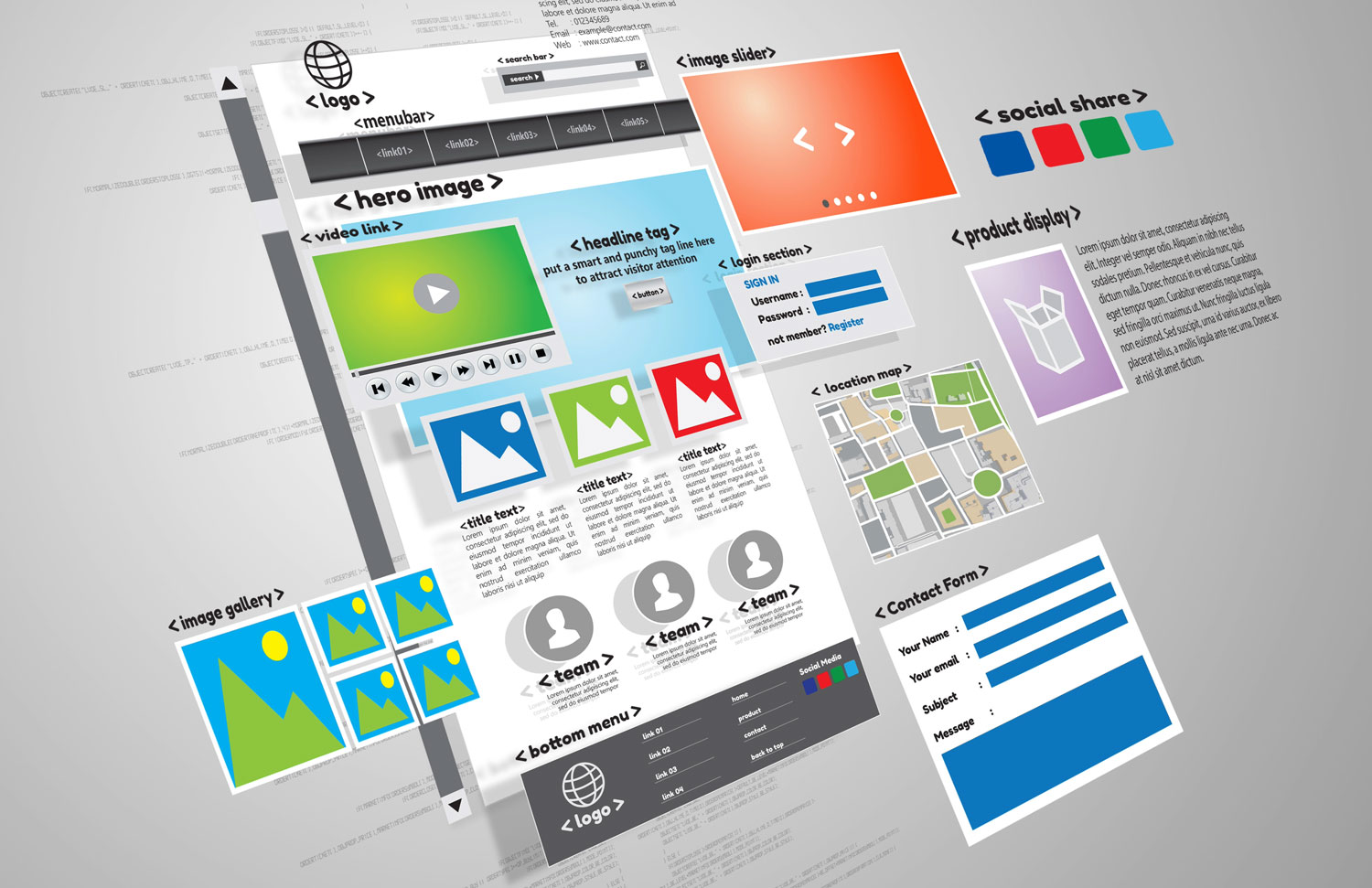When it comes to website design, the footer might not be the first thing that comes to mind. But don’t underestimate its importance—this seemingly small section can play a big role in user experience, branding, and even SEO.
A well-crafted footer does more than mark the end of your page. It serves as a navigation tool, an information hub, and a trust builder. Let’s dive into how you can design a footer that’s both functional and visually appealing while elevating your site’s overall performance.
What Is a Website Footer?
A website footer is the section at the very bottom of a webpage. It’s the final thing users see as they scroll down, making it a key element in wrapping up their experience.
Common Features Found in Website Footers:
- Copyright notices.
- Contact information (email, phone, address).
- Links to privacy policies, terms of service, and legal pages.
- Social media icons.
- Navigation links or a mini-site map.
Far from being a simple afterthought, the footer can influence usability, reinforce branding, and guide users to take action.
Why Are Website Footers Important?
Footers aren’t just about aesthetics—they serve critical functions in website design:
- Enhance Navigation
By acting as a secondary navigation tool, footers help users quickly locate essential pages, like “Contact Us” or “FAQs,” especially when they’ve scrolled through the rest of your content.
- Provide Key Information
Footers are perfect for displaying company details, business hours, and contact info, ensuring visitors can find the information they need without hassle.
- Build Trust
Including privacy policies, copyright notices, and certifications in your footer demonstrates professionalism and builds credibility with users.
- Encourage Action
Footers are a great place to embed CTAs like newsletter sign-ups or clickable buttons, encouraging users to engage further with your brand.
Essential Elements of an Effective Footer
To create a footer that truly enhances your website, include these must-have components:
- Contact Information
Make communication easy by providing your phone number, email, and physical address. Including an email subscription form in the footer can also help you retain customers and keep them engaged.
- Navigation Links
Add static links to critical pages like “About Us,” “Services,” and “FAQs” for better usability. A mini-site map can also guide users to other areas of your site they might have missed.
- Social Media Icons
Linking to your social media accounts helps you connect with users on multiple platforms while encouraging ongoing interaction.
- Trust Signals
Include elements like copyright notices, privacy policy links, and certifications to reassure users of your professionalism and reliability.
Types of Website Footers
Different websites require different footer styles based on their goals and audience. Here are the most common types:
- Fat Footer: Packed with links, CTAs, and social icons, this style is ideal for content-heavy websites.
- Narrow Footer: A minimalist footer that includes only essential information for a clean, uncluttered look.
- CTA Footer: Focused on conversions, these footers use bold calls to action like “Sign Up” or “Get Started.”
- Site Index Footer: A comprehensive list of all pages on the site, best suited for larger websites with extensive content.
Understanding your site’s goals will help you choose the right footer design for your needs.
Best Practices for Footer Design
Follow these key principles to craft a footer that works seamlessly with your website design:
- Keep It Clean and Organized
Group related items into sections with clear headings. Avoid overloading the footer with too many links or visuals that can confuse users.
- Prioritize Mobile Responsiveness
With most users browsing on mobile devices, your footer must look great and function smoothly on smaller screens. Use tappable buttons and ensure text remains legible.
- Stay Consistent with Branding
Incorporate your brand’s colors, fonts, and logo to ensure your footer aligns with the overall design of your site.
- Include a Back-to-Top Button
A “back-to-top” button enhances navigation and makes long pages easier to explore.
- Optimize for SEO
Use descriptive anchor text and include relevant keywords in footer links to boost your site’s search visibility.
Footer Optimization for SEO and User Experience
Your footer should serve both users and search engines. Here’s how to strike the right balance:
For SEO:
- Use internal links to connect key pages.
- Incorporate local SEO keywords for businesses with physical locations.
- Avoid overloading the footer with excessive links, which can appear spammy.
For User Experience:
- Simplify navigation with clear sections and concise labels.
- Provide easy access to contact information and social media.
- Ensure mobile compatibility for seamless browsing on any device.
Ready to Elevate Your Website Design?
A thoughtfully designed footer is more than just the end of a page—it’s an opportunity to enhance usability, build trust, and drive action. By following these tips, you can create a footer that supports your brand and boosts your website’s overall performance.
Need help crafting a footer that fits seamlessly into your website design? Moin Agency specializes in designing websites that look great and work even better.
Contact us today to create a footer that leaves a lasting impression and takes your site to the next level.


